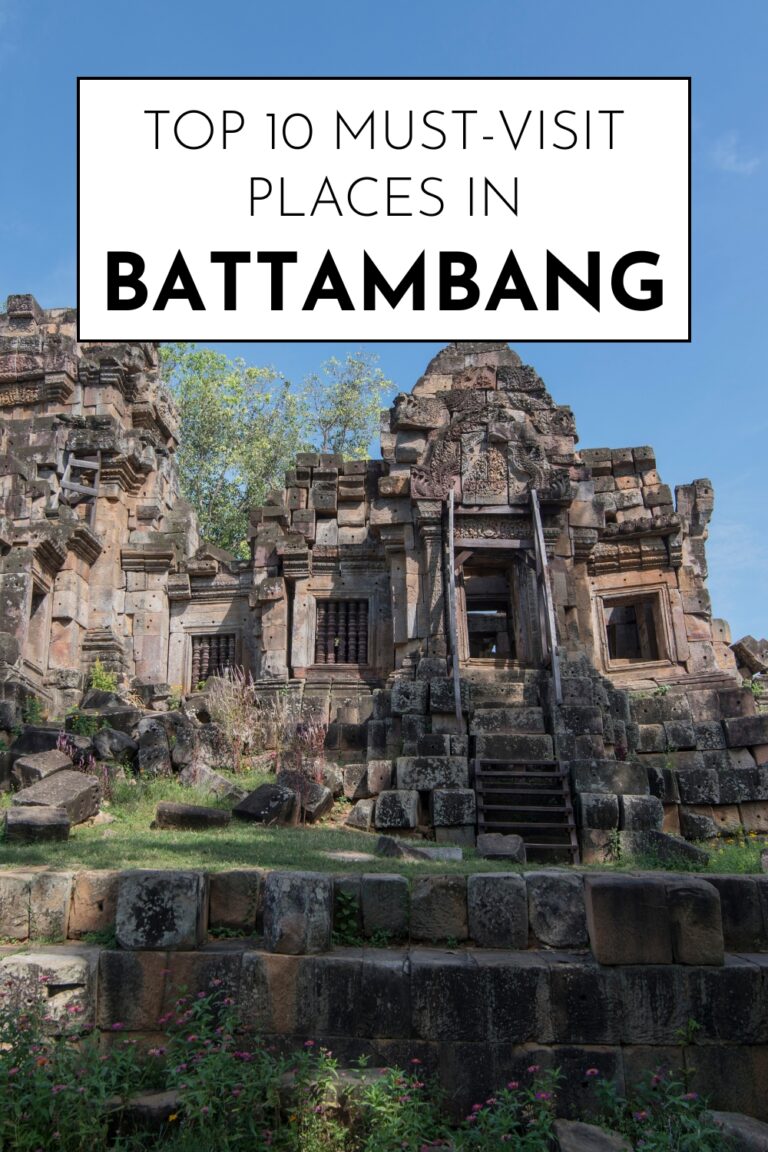Cambodia’s second-largest city, Battambang, offers visitors an authentic glimpse into the country’s rich history, culture, and natural beauty. Located in the northwest of Cambodia, this charming riverside city serves as the perfect base for exploring ancient temples, colonial architecture, and unique local attractions that showcase the heart of Khmer culture.
Battambang’s appeal lies in its unhurried pace and genuine local atmosphere. Unlike the tourist-heavy destinations of Siem Reap or Phnom Penh, Battambang maintains its authentic character while offering world-class attractions. The city’s French colonial buildings line quiet streets, while the surrounding countryside reveals hidden temples, traditional villages, and some of Cambodia’s most fascinating cultural experiences.
What makes Battambang truly special is its role as Cambodia’s cultural heartland. The province is known for producing the country’s finest rice, most talented artists, and richest traditions. Visitors can experience everything from ancient Khmer temples to contemporary art scenes, from traditional fishing villages to unique transportation methods that exist nowhere else in the world.
The city’s compact size makes it perfect for exploration by bicycle or tuk-tuk, while its strategic location provides easy access to some of Cambodia’s most remarkable but lesser-known attractions. Whether you’re interested in history, culture, adventure, or simply experiencing authentic Cambodian life, Battambang offers unforgettable experiences away from the crowds.
Let’s explore the ten essential destinations that make Battambang a must-visit location for anyone traveling through Cambodia.
1. Bamboo Train (Norry) – Unique Rail Adventure
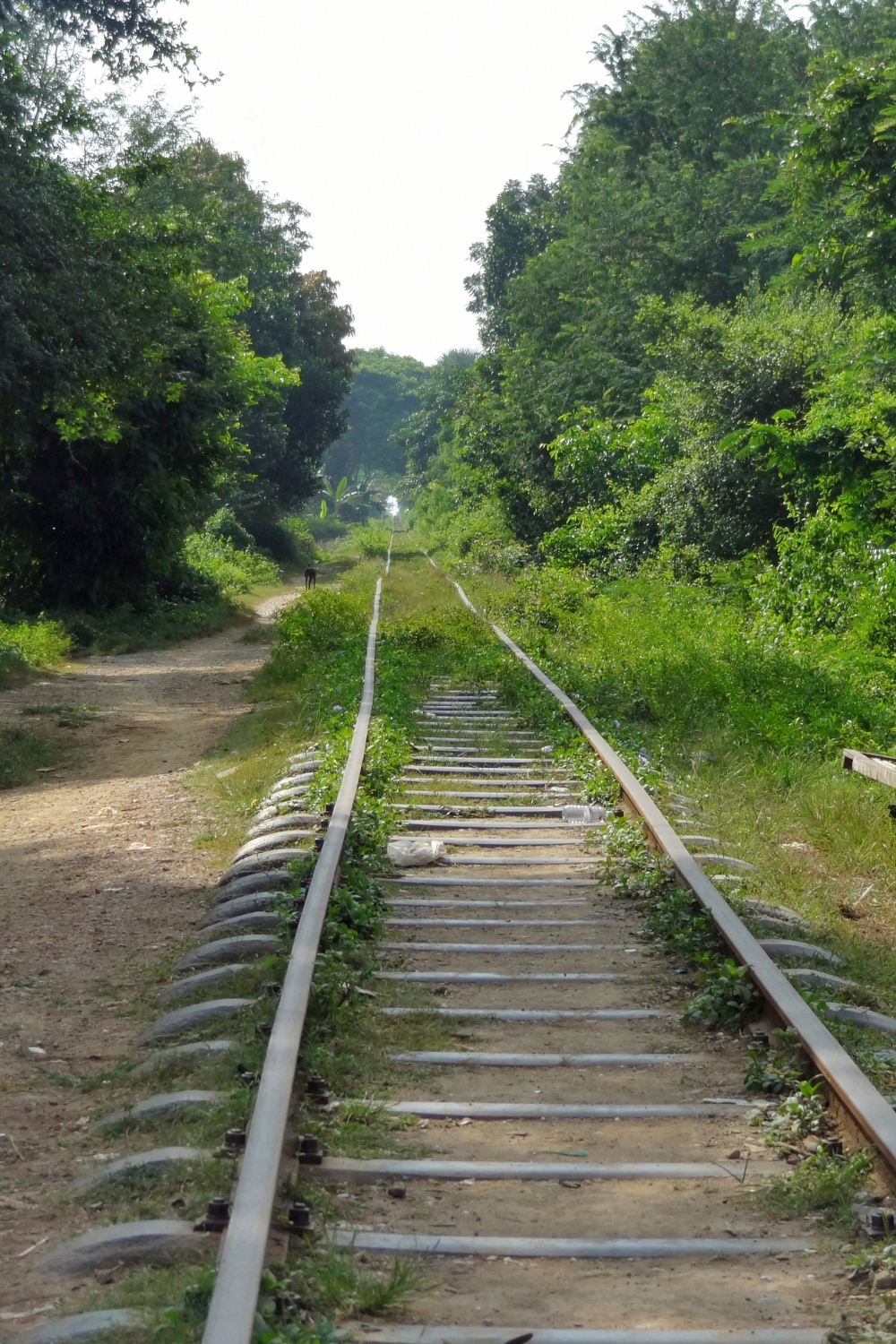
The Bamboo Train, locally known as Norry, represents one of Cambodia’s most unique and thrilling transportation experiences. This ingenious local invention transforms old railway tracks into an adventure ride using bamboo platforms powered by small engines.
Engineering Marvel and Local Innovation
The bamboo train consists of a simple bamboo platform mounted on wheels, powered by a small motorcycle or boat engine. These makeshift vehicles can reach speeds of up to 15 kilometers per hour while carrying passengers and cargo along the railway tracks.
What makes this experience truly special is the local rule of the rails: when two trains meet head-on, the lighter one must be quickly disassembled to allow the heavier one to pass. This process takes only minutes and showcases the efficiency and cooperation of local operators.
Scenic Journey Through Countryside
The 7-kilometer journey takes passengers through rural Cambodian countryside, passing rice fields, traditional villages, and local farms. The open-air ride provides unobstructed views of daily rural life and beautiful natural scenery.
The gentle rocking motion and rhythmic sounds of the bamboo train create a meditative experience that allows travelers to slow down and appreciate the simple beauty of rural Cambodia. Local operators often share stories about village life and point out interesting sights along the way.
Duration: 30-45 minutes round trip
Cost: $5-10 per person
Best time: Early morning or late afternoon
Operating hours: Daily 7 AM – 5 PM
2. Phnom Sampeau – Sacred Mountain and Historical Site
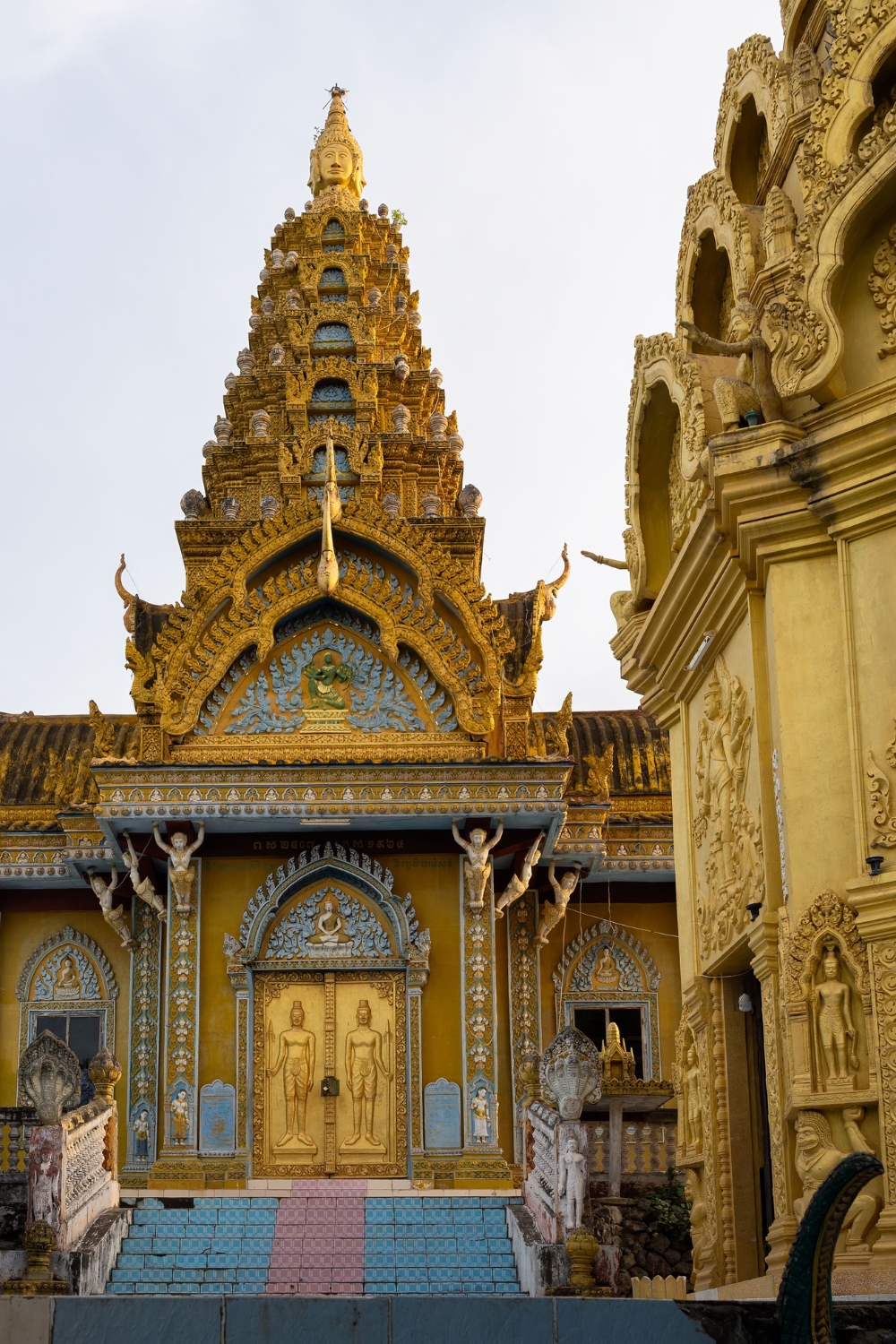
Phnom Sampeau stands as one of Battambang’s most significant religious and historical sites. This limestone mountain houses ancient temples, stunning viewpoints, and serves as a somber reminder of Cambodia’s tragic past during the Khmer Rouge period.
Ancient Temples and Religious Significance
The mountain’s summit features several Buddhist temples that have been pilgrimage sites for centuries. The main temple complex showcases traditional Khmer architecture with intricate carvings and Buddha statues that reflect the spiritual importance of this sacred site.
Local devotees regularly visit the temples for prayers and offerings, creating an atmosphere of active spiritual practice. The temple grounds provide peaceful spaces for meditation and reflection while offering panoramic views of the surrounding countryside.
Killing Caves and Historical Remembrance
Phnom Sampeau also contains the Killing Caves, a sobering reminder of the atrocities committed during the Khmer Rouge regime. These caves served as execution sites, and today they house a memorial with human remains displayed as a tribute to the victims.
The site includes informational displays that provide historical context about this dark period in Cambodian history. Visitors can pay their respects while learning about the resilience and recovery of the Cambodian people.
Bat Cave Spectacular
Every evening at sunset, millions of bats emerge from caves in the mountain, creating one of Southeast Asia’s most impressive natural spectacles. The bats form a continuous black ribbon across the sky that can last for over an hour.
This daily phenomenon attracts photographers and nature enthusiasts from around the world. The best viewing spots are clearly marked, and local guides can provide insights into the bats’ behavior and ecological importance.
Entrance fee: $3 per person
Best time for bats: 5:30-6:30 PM daily
Climbing time: 30-45 minutes to summit
Cultural significance: Religious pilgrimage site
3. Ek Phnom Temple – Ancient Khmer Heritage
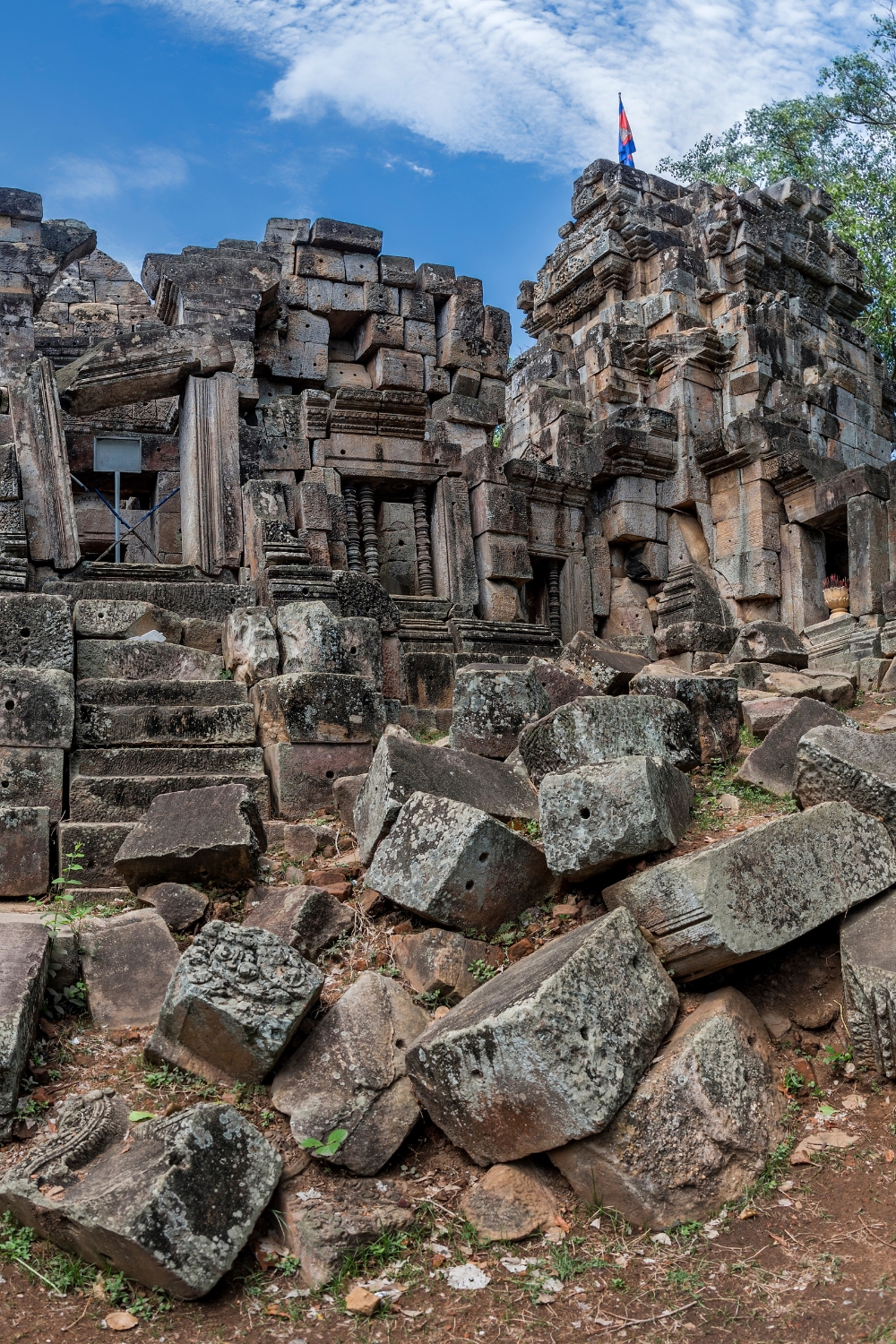
Ek Phnom Temple represents one of Battambang’s most impressive examples of ancient Khmer architecture. Built in the 11th century during the Angkor period, this temple complex showcases the artistic and architectural achievements of the Khmer Empire.
Architectural Marvel and Historical Significance
The temple was constructed during the reign of King Suryavarman VII and demonstrates the sophisticated building techniques of the Angkor period. The central towers feature intricate stone carvings depicting Hindu deities, mythological scenes, and daily life during the height of the Khmer Empire.
Unlike the more famous temples of Angkor Wat, Ek Phnom remains relatively undiscovered, allowing visitors to explore the ruins without crowds. The temple’s partial collapse adds to its mystique and provides insight into how nature reclaims abandoned structures over time.
Artistic Details and Cultural Learning
The temple’s surviving carvings showcase the artistic excellence of Khmer craftsmen. Detailed reliefs depict scenes from Hindu epics, celestial dancers, and architectural elements that influenced temple design throughout the region.
Local guides can explain the religious significance of various carvings and architectural features. The temple serves as an outdoor classroom for understanding Khmer history, religion, and artistic traditions.
Modern Buddhist Integration
A modern Buddhist temple has been built adjacent to the ancient ruins, creating an interesting juxtaposition of old and new religious practices. Active monks maintain the modern temple and often interact with visitors, providing insights into contemporary Buddhist practice in Cambodia.
The combination of ancient ruins and active religious practice demonstrates the continuity of spiritual traditions in Cambodia despite centuries of change and challenge.
Built: 11th century
Entrance fee: $3 per person
Distance from city: 11 kilometers
Best for: History enthusiasts, photography
4. Battambang Circus (Phare Ponleu Selpak) – Cultural Performance
Phare Ponleu Selpak represents one of Cambodia’s most inspiring cultural organizations, combining traditional arts with contemporary social issues through spectacular circus performances. This arts school and performance troupe showcases the creativity and resilience of Cambodian youth.
Social Mission and Community Impact
Founded in 1994, Phare Ponleu Selpak serves as both an arts school and social organization that provides education, training, and opportunities for disadvantaged youth. The organization uses performing arts as a tool for social change and community development.
Students learn various skills including acrobatics, music, theater, and visual arts while receiving general education and life skills training. The program has helped thousands of young people develop careers in the arts and escape cycles of poverty.
World-Class Performances
The circus performances combine traditional Khmer stories with contemporary themes, creating shows that are both entertaining and educational. Professional-level acrobatics, live music, and colorful costumes create spectacular productions that rival international circus performances.
Each show tells a story that addresses social issues such as education, environment, or family relationships. The performances provide insight into Cambodian culture while delivering powerful messages about social responsibility and community cooperation.
Student Training and Educational Programs
Visitors can tour the training facilities and observe students practicing various arts. The organization offers workshops and classes for visitors interested in learning traditional Khmer arts, music, or circus skills.
The school’s visual arts program produces paintings, sculptures, and crafts that reflect both traditional Khmer themes and contemporary social issues. These artworks are available for purchase, with proceeds supporting the school’s programs.
Show times: Monday, Thursday, Saturday 7 PM
Ticket prices: $15-20 adults, $10 children
Duration: 1.5 hours
Advance booking: Recommended
5. Wat Banan Temple – Angkor-Style Architecture
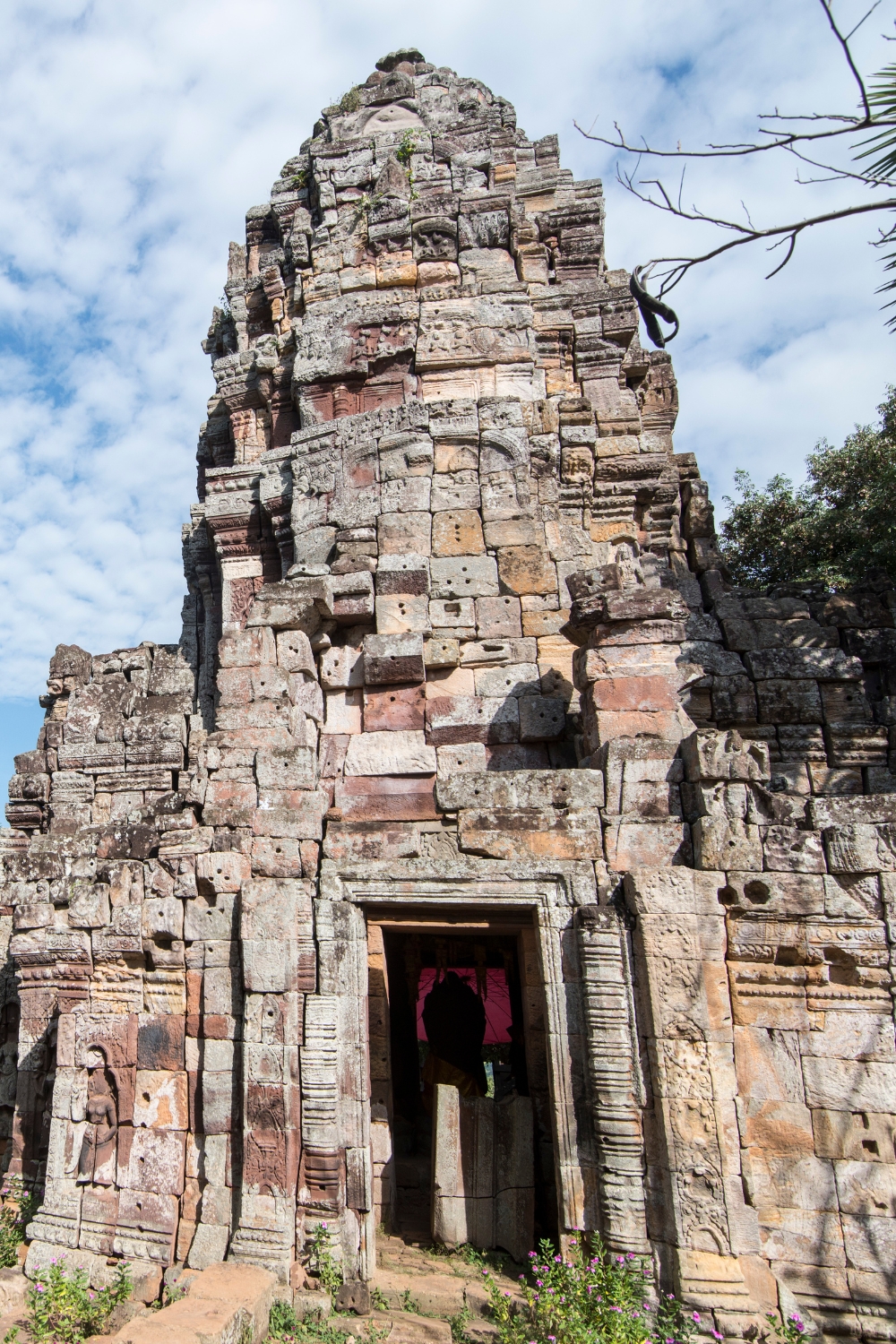
Wat Banan Temple, often called “mini Angkor Wat,” stands as one of Battambang’s most impressive ancient temples. Built in the 11th century, this hilltop temple complex showcases classic Angkor-period architecture in a dramatic setting overlooking the Sangkae River.
Architectural Significance and Design
The temple’s five towers represent Mount Meru, the sacred mountain in Hindu cosmology. The layout and architectural style clearly demonstrate the influence of Angkor Wat, though on a smaller scale. The temple’s elevated position was strategically chosen for both religious and defensive purposes.
The surviving structures include the main temple towers, galleries, and ancillary buildings that demonstrate the sophistication of Khmer engineering. Stone carvings throughout the complex depict religious scenes and decorative motifs that showcase the artistic achievements of the period.
Challenging Climb and Rewarding Views
Reaching the temple requires climbing 358 steep stone steps up the hillside. The climb takes about 20-30 minutes and can be challenging in hot weather, but the effort is rewarded with spectacular views of the surrounding countryside and river valley.
The temple’s elevated position provides panoramic views of rice fields, the Sangkae River, and distant mountains. Early morning and late afternoon visits offer the best lighting for photography and more comfortable climbing conditions.
Historical Context and Cultural Importance
Local legends connect the temple to the Preah Thong and Neang Neak story, important figures in Khmer mythology. The temple served as both a religious center and a strategic outpost during the Angkor period.
Modern archaeological work continues to reveal new information about the temple’s construction and use. The site demonstrates the extent of Angkor period influence throughout the region and the sophisticated urban planning of Khmer civilization.
Built: 11th century
Climbing time: 20-30 minutes
Best time: Early morning or late afternoon
Entrance fee: $3 per person
6. Sangkae River and Floating Villages – Traditional Life
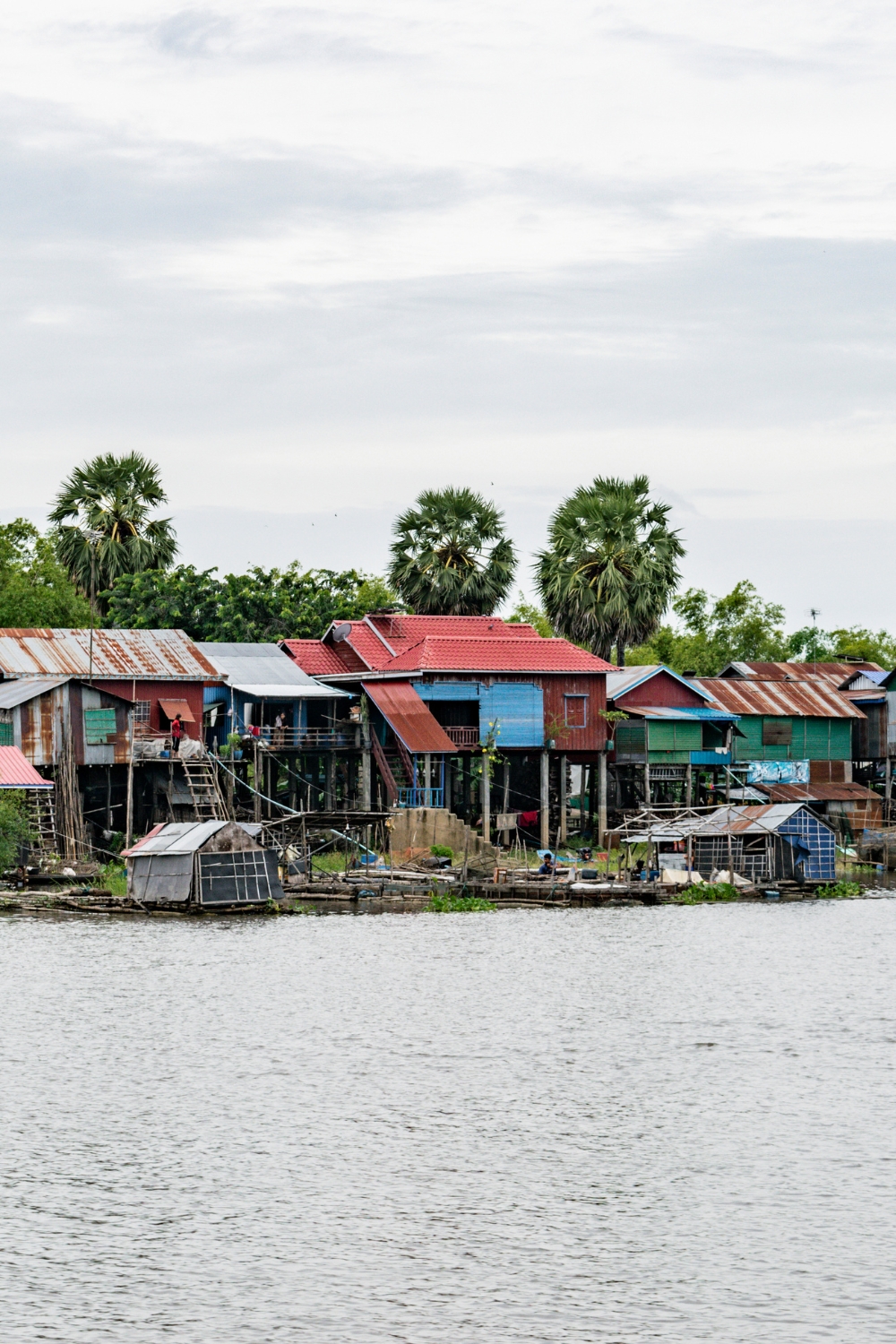
The Sangkae River and its floating villages offer visitors an authentic glimpse into traditional Cambodian river life. These communities have adapted to seasonal flooding by building homes and businesses that rise and fall with the water levels.
Traditional Architecture and Adaptation
The floating villages demonstrate ingenious adaptation to Cambodia’s seasonal flooding patterns. Houses are built on stilts or floating platforms that can accommodate water level changes of several meters between dry and wet seasons.
Traditional construction techniques use locally available materials including bamboo, wood, and palm thatch. The architectural designs have been refined over generations to provide comfort and safety while remaining flexible enough to adapt to changing water conditions.
River Life and Community Culture
Daily life in the floating villages revolves around the river’s rhythms. Residents engage in fishing, rice farming, and small-scale commerce that depends on boat transportation. Children learn to swim and navigate boats before they can walk properly.
The communities maintain strong social bonds and cooperative traditions necessary for survival in the challenging river environment. Visitors can observe traditional fishing techniques, boat building, and other skills that have been passed down through generations.
Boat Tours and Cultural Interaction
Boat tours provide access to the floating villages and opportunities to interact with local families. Many residents welcome visitors and are happy to share information about their lifestyle and traditions.
The tours often include stops at traditional workshops where visitors can observe fish processing, boat repair, and other traditional crafts. Some tours include meals prepared by local families, providing authentic culinary experiences.
Tour duration: 2-3 hours
Cost: $15-25 per person
Best season: Wet season (June-November)
Activities: Boat tours, cultural interaction, photography
7. Battambang Night Market – Local Flavors and Culture
Battambang’s night market comes alive each evening, offering visitors an authentic taste of local life, cuisine, and culture. This bustling market serves as the social heart of the city, where locals and visitors come together to eat, shop, and socialize.
Street Food Paradise
The night market showcases the best of Cambodian street food with vendors offering everything from traditional Khmer dishes to creative fusion cuisine. Must-try items include amok (fish curry), lok lak (stir-fried beef), and various grilled meats and vegetables.
Local specialties include num banh chok (rice noodle soup), fresh spring rolls, and tropical fruits prepared in traditional ways. The market’s affordability allows visitors to sample multiple dishes and experience the full range of Cambodian flavors.
Cultural Interaction and Social Atmosphere
The night market provides excellent opportunities for cultural interaction with local families, students, and workers who come to socialize and eat. The relaxed atmosphere encourages conversation and cultural exchange.
Local vendors often speak some English and enjoy sharing information about their dishes and ingredients. The market serves as an informal cultural center where visitors can learn about daily life in Battambang.
Shopping and Local Products
Beyond food, the market offers clothing, handicrafts, and local products at very reasonable prices. Items include traditional textiles, silverware, and handicrafts made by local artisans.
The market’s shopping opportunities provide ways to support local economic development while acquiring authentic Cambodian products. Bargaining is expected and part of the cultural experience.
Operating hours: Daily 5 PM – 11 PM
Best for: Dinner, cultural interaction, shopping
Budget: Very affordable
Atmosphere: Lively, authentic, family-friendly
8. Wat Damrei Sor (White Elephant Temple) – Spiritual Heritage
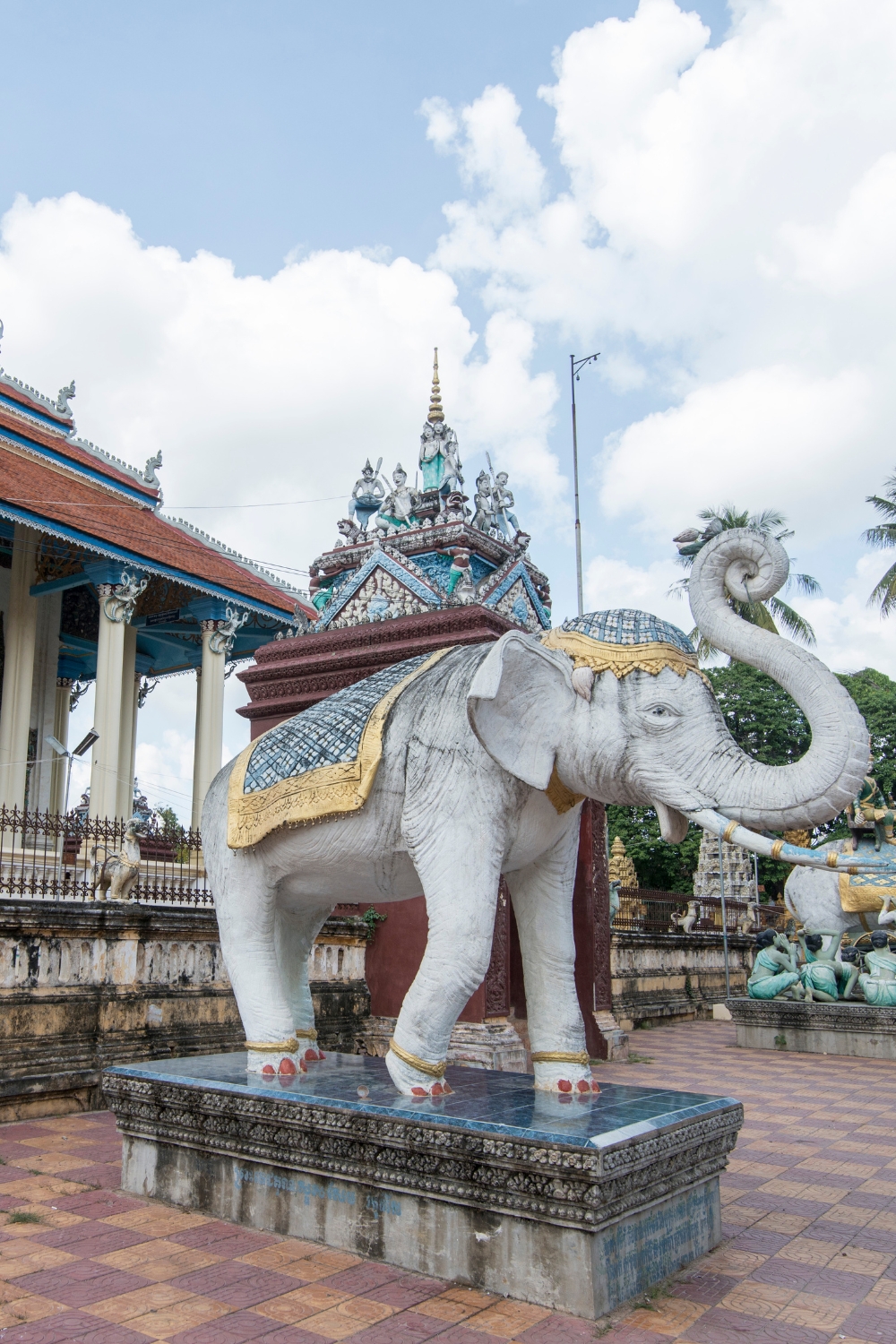
Wat Damrei Sor, known as the White Elephant Temple, represents one of Battambang’s most beautiful and spiritually significant Buddhist temples. This active temple complex showcases traditional Khmer religious architecture while serving as an important center for Buddhist practice and education.
Architectural Beauty and Religious Significance
The temple’s name derives from the white elephant statues that guard the entrance, symbols of power and wisdom in Buddhist tradition. The main temple building features traditional Khmer architecture with intricate carvings, colorful murals, and gold leaf decorations.
The temple complex includes multiple buildings serving different religious and educational functions. The ordination hall, meditation halls, and living quarters for monks create a complete religious community that has operated continuously for centuries.
Active Religious Practice and Community Role
Wat Damrei Sor serves as an active center for Buddhist practice, with daily prayers, meditation sessions, and religious ceremonies. Local devotees regularly visit the temple for prayers, offerings, and spiritual guidance from the resident monks.
The temple also functions as a community center, hosting festivals, educational programs, and social events that bring together people from throughout the region. These activities provide visitors with opportunities to observe authentic Buddhist practice and community life.
Cultural Learning and Spiritual Experience
Visitors can participate in meditation sessions, observe religious ceremonies, and learn about Buddhist teachings from English-speaking monks. The temple’s peaceful atmosphere provides excellent opportunities for reflection and spiritual exploration.
The temple’s library and educational programs offer insights into Buddhist philosophy, Cambodian history, and traditional arts. Visitors interested in deeper cultural understanding can arrange extended stays or volunteer opportunities.
Visiting hours: Daily 6 AM – 6 PM
Activities: Meditation, cultural learning, photography
Dress code: Modest clothing required
Best for: Spiritual seekers, cultural enthusiasts
9. Phnom Banan Caves – Underground Exploration
The cave system beneath Phnom Banan offers adventurous visitors the chance to explore underground chambers filled with stalactites, stalagmites, and ancient Buddhist shrines. These limestone caves provide a cool escape from the heat while offering unique geological and cultural experiences.
Geological Features and Natural Beauty
The limestone caves were formed over millions of years by underground water flow, creating spectacular rock formations throughout the underground chambers. Stalactites and stalagmites create natural sculptures that showcase the artistic power of geological processes.
The caves maintain cool temperatures year-round, making them popular refuges during hot weather. The underground chambers feature various sizes and configurations, from small chambers to large halls that can accommodate groups of visitors.
Historical and Religious Significance
The caves have been used for religious purposes for centuries, with Buddhist shrines and statues placed throughout the underground chambers. Local legends associate the caves with meditation retreats and spiritual practices of ancient monks.
Archaeological evidence suggests the caves provided shelter and strategic advantages during various periods of Cambodian history. The combination of natural beauty and historical significance makes the caves important cultural sites.
Adventure and Exploration
Cave exploration requires basic caving equipment and local guides who understand the underground layout and safety considerations. The caves offer different levels of adventure, from easy walks through large chambers to more challenging explorations of narrow passages.
Local guides provide flashlights and basic safety equipment while sharing information about the caves’ formation, history, and cultural significance. The underground environment creates unique photography opportunities for visitors with appropriate equipment.
Guided tours: Required for safety
Duration: 1-2 hours
Difficulty: Easy to moderate
Equipment: Provided by guides
10. Kamping Poy Lake – Engineering Marvel and Recreation
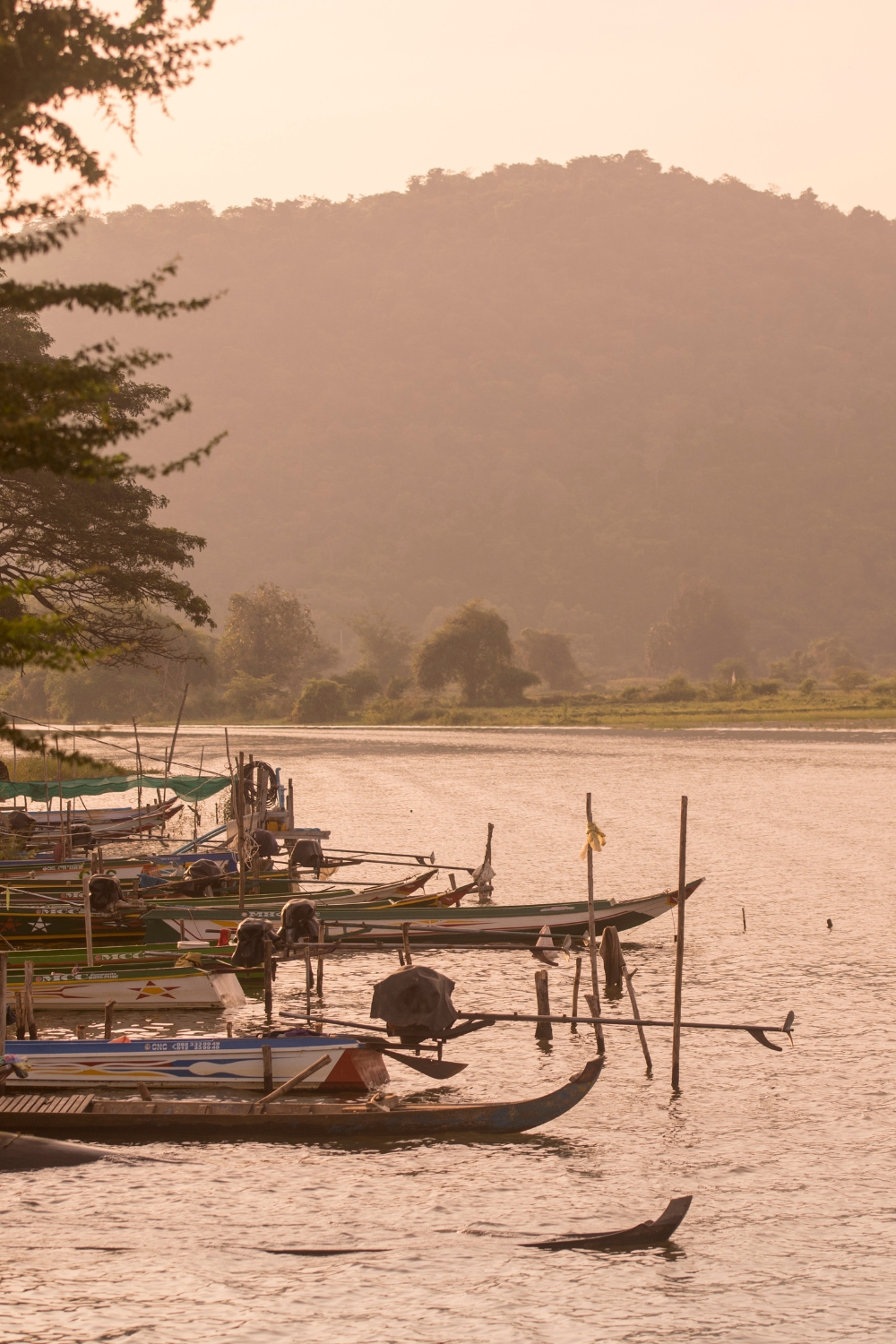
Kamping Poy Lake represents both a marvel of engineering and a tragic reminder of Cambodia’s recent history. This large artificial lake was created during the Khmer Rouge period using forced labor, but today it serves as a popular recreation area and important water resource.
Historical Context and Engineering Achievement
The lake was constructed between 1977-1979 using primitive tools and forced labor under extremely harsh conditions. Despite the tragic circumstances of its creation, the lake represents a significant engineering achievement that required moving massive amounts of earth and stone.
The dam and lake system demonstrates the hydraulic engineering capabilities developed during the Angkor period and applied under very different circumstances. The project created a major water resource that continues to serve the region’s agricultural needs.
Recreation and Natural Beauty
Today, Kamping Poy Lake serves as a popular destination for swimming, boating, and picnicking. The large lake provides cooling breezes and relief from the heat, making it especially popular during hot season.
Local vendors offer boat rentals, swimming equipment, and refreshments. The lake’s size and depth make it suitable for various water activities, though visitors should be aware of seasonal water level changes.
Memorial and Remembrance
The lake serves as an informal memorial to those who died during its construction. Visitors can learn about this period of Cambodian history while appreciating the resilience of the Cambodian people who have transformed a site of tragedy into a place of recreation and life.
The lake’s current use demonstrates how communities can reclaim and transform sites associated with difficult histories. This transformation provides hope and demonstrates the healing power of time and community resilience.
Activities: Swimming, boating, picnicking
Best season: Dry season (November-April)
Historical significance: Khmer Rouge period construction
Current use: Recreation and water supply
Planning Your Battambang Adventure
Getting to and Around Battambang
Battambang is easily accessible from major Cambodian cities and neighboring countries. Buses from Phnom Penh take about 5-6 hours, while the journey from Siem Reap takes about 3 hours through scenic countryside.
Once in Battambang, tuk-tuks provide convenient transportation for city exploration and nearby attractions. Bicycle rentals offer eco-friendly ways to explore the city center and surrounding areas. Many attractions can be combined into full-day tours that maximize time and minimize transportation costs.
Best Time to Visit
Cool Season (November-February): Perfect weather for all activities with comfortable temperatures and minimal rainfall. This peak season offers ideal conditions for temple exploration, cycling, and outdoor activities.
Hot Season (March-May): Good for early morning and late afternoon activities. The heat can be intense midday, but attractions like caves and riverside areas provide natural cooling. Water activities become more appealing during this season.
Rainy Season (June-October): Fewer crowds and lush landscapes, though some rural roads may be challenging. The floating villages are at their most impressive, and the countryside becomes vibrant green.
Cultural Considerations and Respect
Battambang’s attractions include many religious sites that require respectful behavior and appropriate dress. When visiting temples, cover shoulders and knees, remove shoes before entering buildings, and maintain quiet, respectful demeanor.
The city’s residents are generally welcoming to visitors, but remember that this is a working city with deep cultural traditions. Learning basic Khmer phrases and showing interest in local customs helps create positive interactions with local people.
Budget and Practical Tips
Battambang offers excellent value for travelers, with accommodation, food, and activities available at very reasonable prices. Many attractions have minimal entrance fees, and street food provides delicious, affordable dining options.
Consider purchasing attraction passes that include multiple sites, and always confirm prices before beginning tours or activities. Carrying small bills in local currency makes transactions smoother and shows respect for local business practices.
Conclusion
Battambang offers an extraordinary window into authentic Cambodian life, combining ancient history with contemporary culture in ways that create unforgettable travel experiences. From the unique adventure of the bamboo train to the spiritual significance of ancient temples, from the creativity of the circus school to the natural beauty of caves and lakes, each destination reveals different aspects of this remarkable region.
What makes Battambang truly special is its role as Cambodia’s cultural heartland, where traditional ways of life continue alongside modern development. The city provides opportunities to experience authentic Khmer culture, learn about Cambodia’s complex history, and interact with local communities in meaningful ways.
These ten must-visit places represent the diversity of experiences available in Battambang, but they’re just the beginning of what this fascinating destination offers. The city’s manageable size allows visitors to experience multiple attractions while maintaining a relaxed pace that encourages deeper cultural understanding.
Whether you’re interested in ancient history, contemporary arts, natural beauty, or cultural immersion, Battambang delivers experiences that exceed expectations. The combination of significant historical sites, active cultural institutions, and welcoming local communities makes Battambang an essential destination for anyone seeking to understand the heart of Cambodia.
Start planning your Battambang adventure today, and prepare to discover why this riverside city has become one of Southeast Asia’s most rewarding off-the-beaten-path destinations. The experiences and insights gained in Battambang will provide lasting memories and deeper appreciation for Cambodia’s rich cultural heritage.
